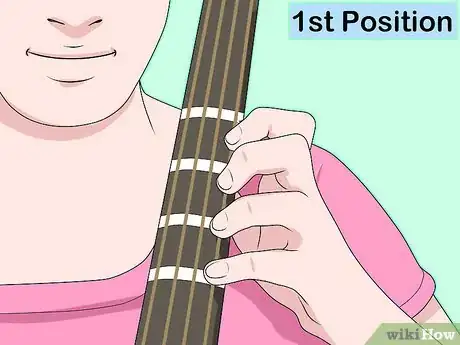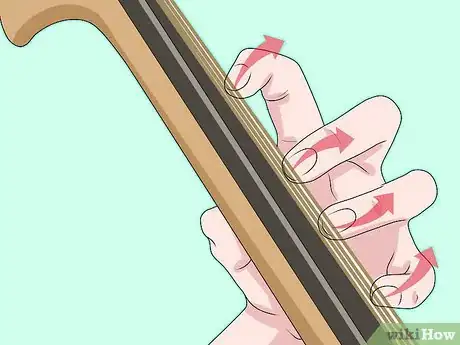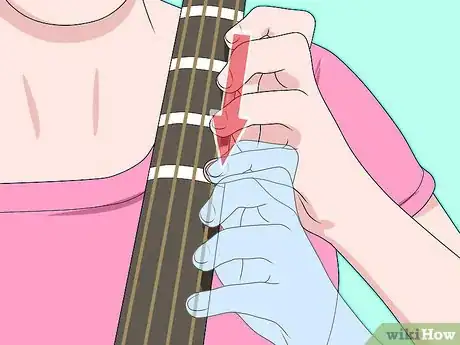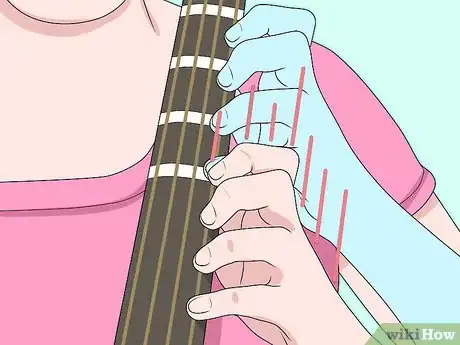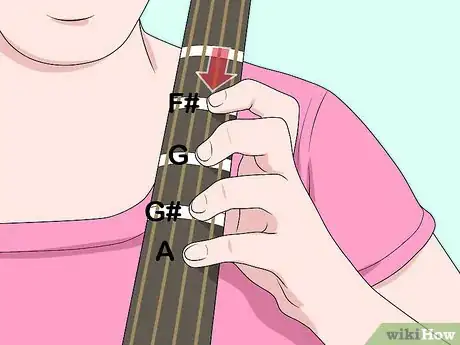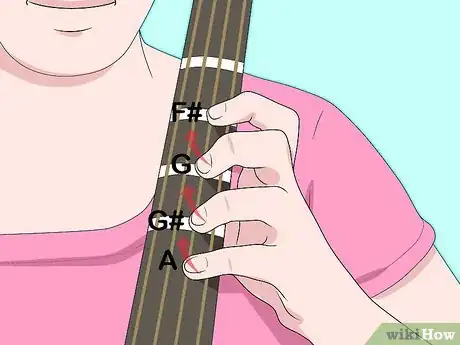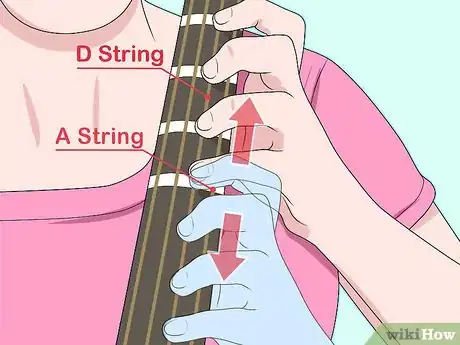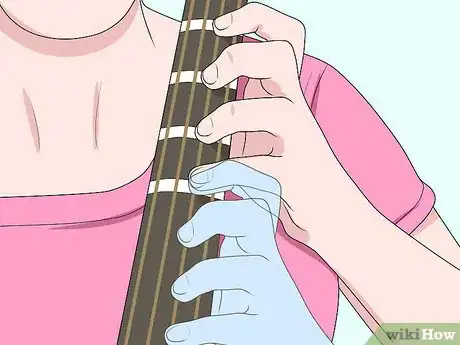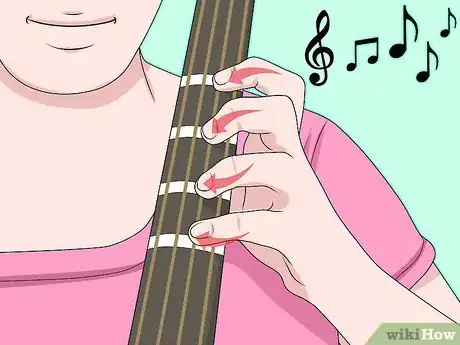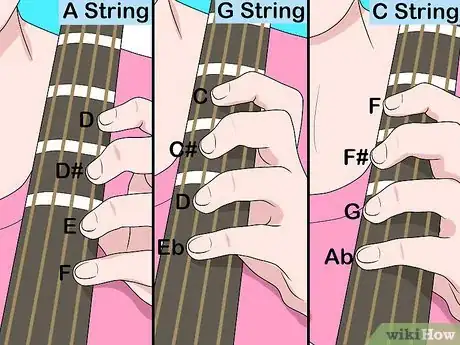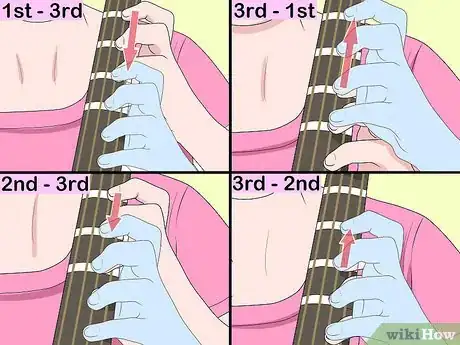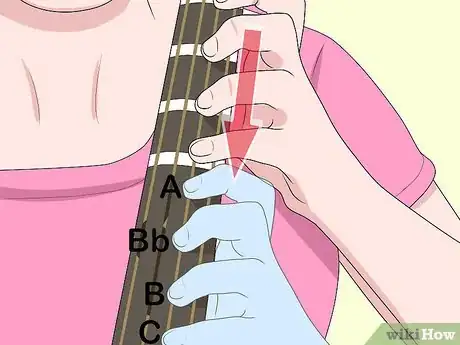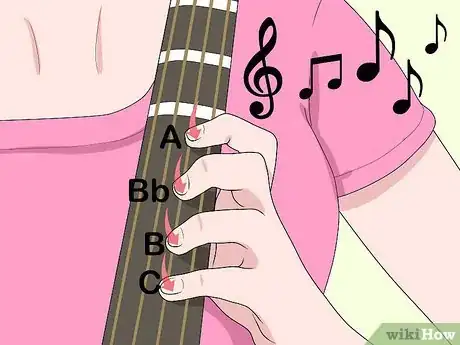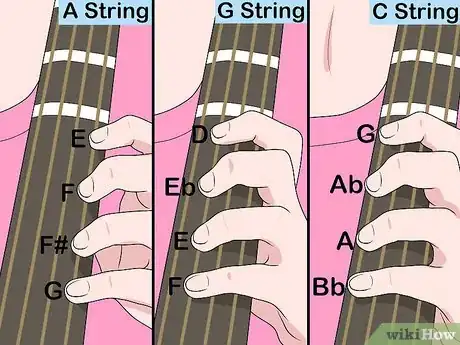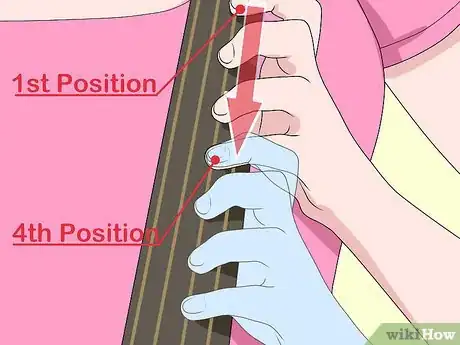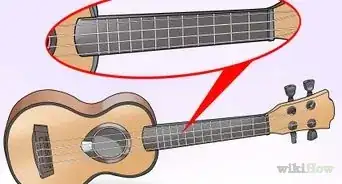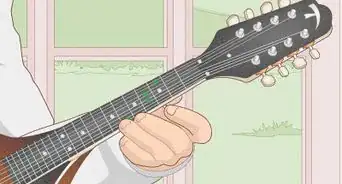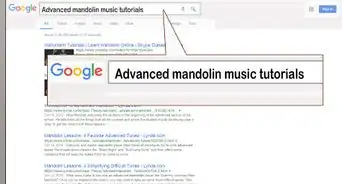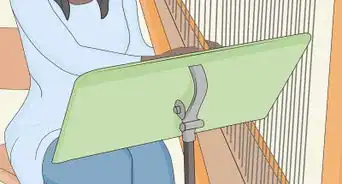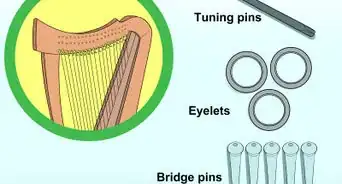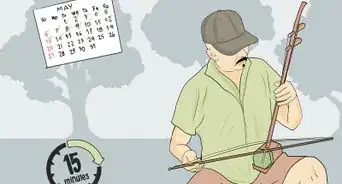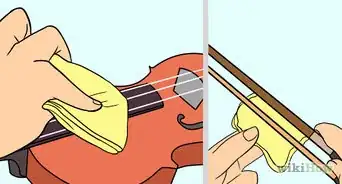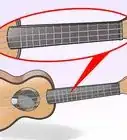X
wikiHow is a “wiki,” similar to Wikipedia, which means that many of our articles are co-written by multiple authors. To create this article, volunteer authors worked to edit and improve it over time.
This article has been viewed 25,260 times.
Learn more...
Shifting positions on a cello can be very difficult but it necessary for many songs. Moving across the strings in first position to play a certain note is much too slow. It is actually possible to play a song on only one string with shifting. At first, shifting may be very slow and inaccurate, however, with practice, it can become a very swift and accurate movement. There are four basic positions on the cello. Begin with Step 1 to start shifting.
Steps
Part 1
Part 1 of 4:
Shifting
-
1Place your left hand in first position on any string. Make sure that your arm and fingers are curved. Check your thumb that it is supporting the cello but not squeezing it tightly. If you are squeezing it too tightly, relax your hand and gently place your thumb at the neck of the cello.
-
2Lift your fingers up above the strings. Only hover them over the strings. Try not to get too close to the strings as the shifting movement will be much harder, however, having your fingers too high above the strings will make it hard to accurately place your fingers.Advertisement
-
3Move your hand slowly and smoothly towards one of the basic positions. This action must be done smoothly so that there is less tension in your arm.
-
4Increase the pace but remain smooth. Gradually increase the speed of shifting to each position. Avoid yanking your arm towards the position. Keeping your thumb loose helps you shift easier.
Advertisement
Part 2
Part 2 of 4:
Moving to Second Position
-
1Place your left hand in first position on the D string. Make sure you are completely accurate. Press all four fingers down and play the D string. Lift your fingers off one by one to see if each note it in tune. Once you have checked and the notes are in tune, place your hand gently on the D string in first position again.
-
2Loosen your thumb up slightly and move your hand so that your first finger is on the F# note and your second finger is on the G note. Your third finger should be on the G# note and your fourth finger should be on the A note. This A is the same A as your open string A. Press down all your fingers in this position and play.
- To test if your second position on the D string is correct, play your open A string and compare. They both should sound the same.
-
3Practice lifting up your fingers in this position. Lift your fourth finger to see what G# sounds like, then lift your third finger to listen to G and so on. If the notes are out of tune, adjust your fingers and try again.
-
4Move your hand back to first position. Remember to move your thumb with your fingers. Ensure that you are not squeezing too tightly. Remember to lift your fingers slightly first then move. Avoid sliding up and down the strings with your fingers as it is very slow. Always keep your fingers and arm curved over.
-
5Practice moving back and forth on the D string. Improve your speed and accuracy. Practice shifting to second position on the other strings too:
- In second position on the A string, the notes are (first to fourth finger):
- C#; D; D#; E
- G string:
- B; C; C#; D (this D is the same D as your open string D)
- C string:
- E; F; F#; G (this G is the same G as your open string G)
- In second position on the A string, the notes are (first to fourth finger):
Advertisement
Part 3
Part 3 of 4:
Moving to Third Position
-
1Place your left hand in first position on the D string. Move your hand so that your first finger is on the G note and your second finger is on the G# note. Your third finger should now be on the A note and your fourth finger should be on the B♭ note.
-
2Press down all your fingers and play. Lift your fourth finger up and play. This should be the A note. To check if it is accurate, play your open A string to compare. Then, lift your third finger up and play (this should be the G# note) and so on. If the notes are out of tune, adjust your fingers and try again.
-
3Lift your fingers up slightly and move back to first position. Always check your thumb. Do not make it a habit to keep your thumb in one spot while shifting as this will cause problems.
-
4Try out the other strings. Always adjust your fingers if the sound is out of tune.
- In third position, the notes on the A string are:
- D; D#; E; F
- G string:
- C; C#; D; E♭
- C string:
- F; F#; G; A♭
- In third position, the notes on the A string are:
-
5Practice shifting to the various positions. Practice slowly and gradually increase the speed. Try shifting from:
- First to third position
- Second to third position
- Third to first position
- Third to second position
Advertisement
Part 4
Part 4 of 4:
Moving to Fourth Position
-
1Place your left hand in first position on the D string. Check to see if all your fingers are accurately placed. Adjust your fingers to the correct position if necessary.
-
2Move you hand so that your first finger is on the A note and your second finger is on the B♭ note. Your third finger should be on the B note and your fourth should be on the C note.
-
3Press down all your fingers and play. Note that the C note is the same C note on the A string in first position. Lift your fourth finger up and play, then lift your third finger up and play and so on. Adjust your fingers if the notes are out of tune.
-
4Practice this on the other strings.
- In fourth position, the notes on the A string are:
- E; F; F#; G
- G String
- D; E♭; E; F
- C String
- G; A♭; A; B♭
- In fourth position, the notes on the A string are:
-
5Try the different combinations of positions. Moving from first to fourth position (and back) is difficult to do quickly and accurately.
Advertisement
Community Q&A
-
QuestionHow can I play a D flat key?
 Eliana ShinCommunity AnswerThe key of D flat major has a key signature with B flat, E flat, A flat, D flat, and G flat. If you're trying to play a scale, start on the C string and play the first note, a D flat, with an extended first finger in first position. From there, play each note, remembering the 5 flats. You will probably hear a wrong note.
Eliana ShinCommunity AnswerThe key of D flat major has a key signature with B flat, E flat, A flat, D flat, and G flat. If you're trying to play a scale, start on the C string and play the first note, a D flat, with an extended first finger in first position. From there, play each note, remembering the 5 flats. You will probably hear a wrong note. -
QuestionHow do I extend on a cello?
 Community AnswerFor extended finger positions, make sure that your first finger is firmly planted - this will allow you to stretch to the next note more easily. If you're finding an extension too hard, you can just shift (move your hand so that you don't have to stretch).
Community AnswerFor extended finger positions, make sure that your first finger is firmly planted - this will allow you to stretch to the next note more easily. If you're finding an extension too hard, you can just shift (move your hand so that you don't have to stretch).
Advertisement
About This Article
Advertisement
